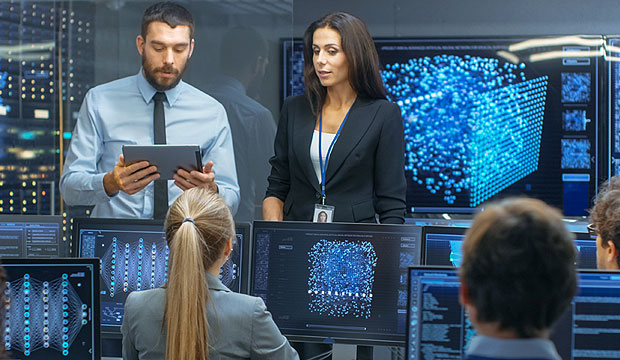Introduction
Cybercrime has significantly increased with the expansion of the internet. This paper will delve into cyber and network forensics, essential fields in addressing these digital crimes. In today's digital age, a considerable number of criminal cases require digital or electronic proof as evidence. For evidence to be admissible in court, certain procedures must be followed, from the collection of data to its secure storage until needed in a legal case.
Understanding Cyber Forensics
Cyber forensics, in simple terms, involves investigating, gathering, and analyzing information from computer devices. This information can then be transformed into hardware proof, which can be presented in court regarding the crime in question. An important aspect of the investigation is creating a digital copy of the computer's storage cell and analyzing it to ensure the device itself is not accidentally violated during the process. The primary goal is to identify malware in the software component of the device while preserving the integrity of its hardware components.
The Importance of Cyber Forensics
The necessity for cyber forensics is straightforward yet of paramount importance. It is primarily applied in combating severe online crimes such as hacking and Denial of Service (DoS) attacks. The digital proofs, such as browsing history, email logs, or other digital footprints, provide investigators with crucial advantages in crime scenes that involve computer devices.
Challenges in Cyber Security
With extensive communication over the web and a vast amount of data exchange through applications, security becomes a critical concern. Individuals, companies, and organizations dealing with sensitive information should ensure high levels of protection, as most attacks occur online through computers and mobile devices.
Skills Necessary for Learning Forensics
- Technical Aptitude: Knowledge of various technologies and network hacks is essential.
- Attention to Detail: Cyber forensics requires identifying small details to connect the dots and form larger, concrete proof.
- Knowledge of Law and Criminal Investigation: Understanding legal contexts enhances the effectiveness of forensic investigations.
- Communication Skills: Clear communication is crucial, whether in office settings or courtrooms.
- Cyber Security Basics: A strong foundation in cyber security complements cyber forensic skills.
- Analytical Skills: Analyzing and understanding data is key to successful investigations.
- Continuous Learning: The field is ever-evolving, requiring ongoing education and adaptation.
- Optimism and Enthusiasm: Each challenge should be met with a positive outlook.
Digital Forensic Process
- Preparation and Identification: Initial steps involve setting up and identifying the target system or data.
- Collection: Data is collected from the target or suspect.
- Imaging and Preservation: Data is duplicated and preserved for forensic integrity.
- Examination and Analysis: The collected data is scrutinized and analyzed.
- Presentation: The evidence is presented in a coherent format for courtroom use.
Types of Cybercrimes Associated with Forensics
- Computer as a Target: Crimes where unauthorized entities access systems and cause damage.
- Computer as a Tool: Crimes such as electronic theft and money laundering.
- Computer as Evidence Storage: Computers that store evidence of other crimes or are used in network attacks.
Limitations of Cyber Forensics
- High Costs: The cost of producing and preserving digital evidence is generally high.
- Legal Knowledge Gaps: Some judges and legal practitioners lack sufficient knowledge of computer forensics.
- Confidentiality Concerns: Sensitive information involved in forensic cases may be exposed.
Conclusion
Understanding both cyber and network forensics is crucial for protecting data in a digital landscape. As businesses and communications increasingly rely on digital platforms, from online chats to cloud storage, securing these mediums is imperative to prevent cybercrime and ensure data integrity.

